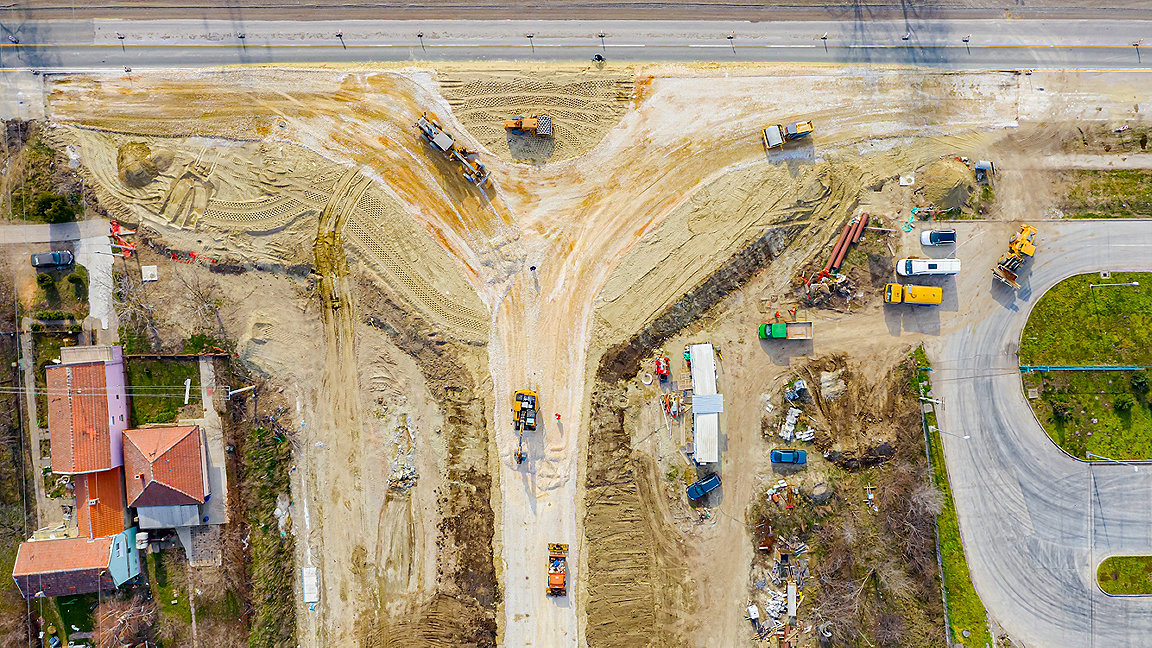
Updated 24 January 2023
Last year was in many ways defined by the war between Russia and Ukraine, which affected in particular the way that the construction industry operates. It restricted access to materials and fuel, putting further strain on a sector still grappling with the ongoing effects of the COVID-19 pandemic.
At same time, the skills shortage – which has hampered the productivity of the industry for years now – still needs a solution. This crisis has also been exacerbated by the pandemic, with tens of thousands of baby boomers seeking early retirement in both North America and the UK. It is not clear where their replacements will be found, although some in the industry are turning to technology for possible efficiencies.
Finally, the mental health crisis in the sector remains a silent killer. While some action has been taken to address this, it has for the most part been slow and piecemeal. As a likely recession looms, this can only be expected to deepen people's personal struggles.
With all this in mind, what are the biggest threats and opportunities facing the industry in 2023? To understand the picture in the global north, Construction Journal asked three experts in North America about the issues in that market, to offer specific examples of wider trends.
Mental health concerns must be addressed
Jordan Bateman, vice-president of comms and marketing at the Independent Contractors and Businesses Association (ICBA) in British Columbia, Canada, says: 'Two issues will get a lot of coverage: labour shortages and supply chain slowdowns. But there's also a mental health issue in construction, running very silently but very deeply on job sites.
'We all know about the labour shortages brought on by an ageing workforce – more than 80% of ICBA's member companies report they would hire more workers today if they could find them. Meanwhile, the cost hikes and delays brought on by supply shortages continue to frustrate project owners and builders.'
However, as he says, 'Mental health is a growing concern, and needs to be on the radar of everyone involved in the industry. Construction workers are five times more likely to die by suicide than the average Canadian worker. Addiction issues also affect many of them, leading to high overdose rates.
'ICBA has more than 150,000 Canadians relying on our group benefits plans, and we have seen skyrocketing use of mental health services and prescription drugs related to anxiety, depression and sleeplessness.'
In response, he says, 'ICBA is expanding its wellness programme with partners across the country. We already have more than 10,000 construction professionals regularly receiving mental health information relevant to, and designed for, them.
'Overcoming these issues starts with breaking the stigma around them, and that is the major focus for our programme in 2023. As an industry, we are all committed to making sure work is done safely. This must include addressing the mental health of our teams.'
Labour shortages could stall growth
Affirming Bateman's remark about the state of the workforce, Altus Group senior director Marlon Bray says: 'Shortages are one of the biggest challenges facing the North American construction labour market. This issue has been building for more than a decade, and has been compounded by significant market demand.
'Although there may be a slowdown in 2023 due to rising interest rates, it won't last long. With housing affordability challenges, rising immigration rates and an increasing number of infrastructure projects, this will continue to be a challenge for several years until a new cohort of experienced labourers has come up the ranks.'
BTY Group director of project monitoring and lender services Rob Wilson picks up on this point. 'Canada is due to welcome nearly half a million new immigrants annually over the next few years,' he remarks, 'along with all the associated residential and infrastructure work required to accommodate them.'
'Labour markets will be tightest in the Greater Toronto area and Metro Vancouver regional district, the most popular destinations for newcomers. But the Atlantic provinces and smaller cities with less expensive real estate are increasingly attracting new immigrants.'
He sees a similar situation in the US. 'There were 450,000 construction job openings in the last quarter of 2022,' he notes, 'the highest level ever recorded. It is expected that the $550bn Infrastructure Investment and Jobs Act, or Bipartisan Infrastructure Law, will create 300,000 new jobs across the construction industry in 2027 and 2028. But how the labour shortfall will be solved remains an open question.'
'Shortages are one of the biggest challenges facing the North American construction labour market'
Technology seeing increased interest
Wilson's colleague, BTY director of cost management services Michael Gabert, suggests: 'Part of the answer will come from the increased adoption of digital technologies that can reduce costs and increase efficiency in construction. BIM and two- and three-dimensional modelling are already being more widely adopted, and developers and contractors say they are more and more willing to invest further in combining digital and physical technologies to increase efficiency, such as sensors, internet of things devices, robotics, immersive collaboration and drones.
'Expanded adoption of prefabrication and modular construction capabilities is also expected to help mitigate some of the shortfall in labour. This helps developers benefit from the efficiencies of building in controlled environments and respond to changes in customer demands while maintaining or improving margins.'
Bray agrees, adding that: 'While the construction industry lags in adopting technology, we are seeing some uses that could eventually help offset the labour shortage. We are starting to see more projects designed using BIM, as well the use of digital permits. Digital twins also mean we can build virtually first, and then use prefabricated components to speed up the construction process.'
'Nevertheless, the adoption of the technology would need to reach critical mass across the industry to make a meaningful impact.'
Demand remains high despite uncertainty
BuildForce Canada executive director Bill Ferreira meanwhile sees signs that demand is growing at the start of 2023.
'Construction in Canada is hot. By any significant metric, the industry is reporting record or near-record volumes of activity as 2022 closes. The value of building permits during the first ten months of 2022 is already 9.5% ahead of the previous year's.
'Employment in the industry in Canada, which reached a peak of 1.6m in July 2022, still remained comfortably above 1.5m by November – even as the industry contracted in preparation for winter. The sector's unemployment rate stands at just 3.4% – one of the lowest figures on record – which in part is a reflection of employment demand outpacing labour force growth and declining frictional unemployment.'
Wilson also comments that: 'A projected economic slowdown, high interest rates, and materials costs may slow the pace of homebuilding, but the fundamentals still support steady growth and demand for labour.'
Taking up the question again, though, Ferreira observes that, 'Construction's biggest challenge heading into 2023 is not what to build, but rather who will build it. BuildForce Canada anticipates that, between 2023 and 2027, around 156,000 workers will retire from the industry.
'In addition to replacing these workers, a further 16,000 will be needed to respond to rising demands, such as an annual increase in new home construction to achieve the government's goal of doubling new home construction over the next ten years, the transition to a greener economy that will require both retrofits to homes and businesses to reduce our dependency on fossil fuels, and the required increase in electricity generating capacity to enable the electrification transition to occur.'
'Typically, the sector would look to meet most of its hiring requirements by recruiting new entrants under the age of 30 from the local population. Based on historical trends, it should be able to employ up to 143,000 such people. But even that figure would leave the sector short by as many as 29,000 workers by 2027.'
Ferreira goes on to say: 'Demography is complicating matters. The percentage of Canada's population aged 14 years or younger – that is, those poised to enter the construction workforce in the next 15 years – is shrinking. In 2002, they accounted for 19% of the country's population; by 2022, this figure had declined to 16%.
'Meanwhile, the percentage of people aged 50–64 and nearing retirement increased from 17% in 2002 to 20% in 2022. Currently, 21% of the sector's workforce is made up of people aged 55 years and older, an 8% increase since 2002.
'The construction industry must therefore consider new approaches to resolve an already-entrenched labour force challenge. In particular, it must step up its efforts to recruit from traditionally under-represented groups: women, Indigenous People, and newcomers to Canada. Flexibility, innovation, and responsiveness will be key.'
Marlon Bray is senior director at Altus Group
Contact Marlon: Email
Bill Ferreira is executive director at BuildForce Canada
Contact Bill: Email
Michael Gabert MRICS is a director of cost management services BTY Group
Contact Michael: Email
Rob Wilson FRICS is a director of project monitoring and lender services at BTY Group and a former RICS Governing Council member
Contact Rob: Email

